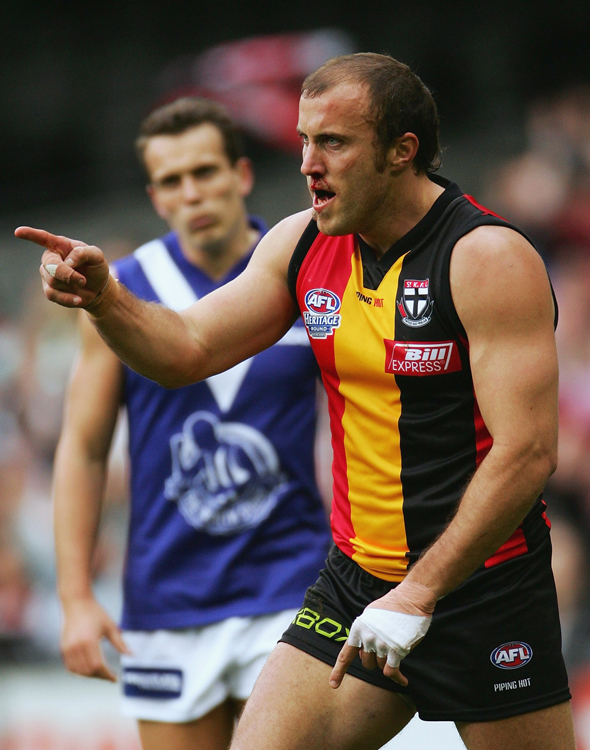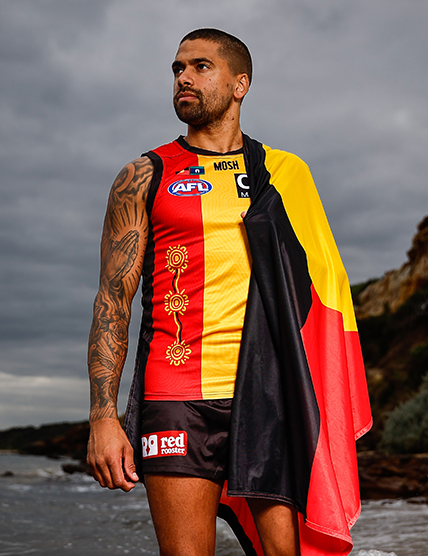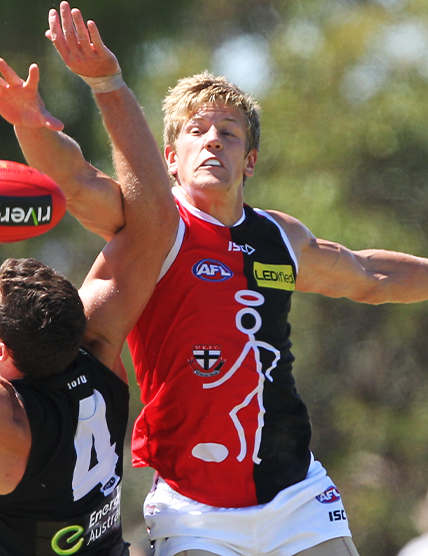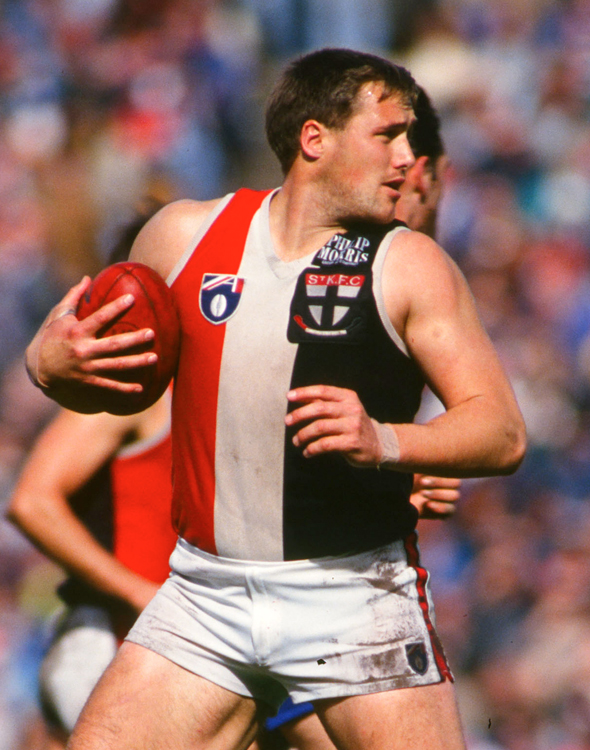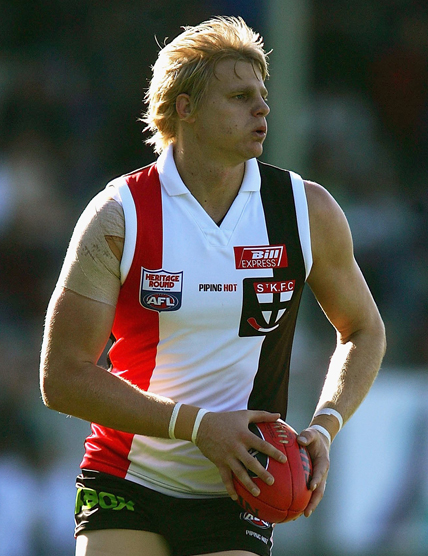Debuted in 1873 during St Kilda’s days in the Victorian Football Association, this canvas, lace-up jerkin was often paired with a white neckerchief – and later a yoke – to distinguish it from other clubs.
Most notably, it is the only Saints guernsey to feature horizontal stripes instead of vertical ones, with matching, hooped red and black stripes mirroring the uniform’s top half.
While not a compulsory part of the official kit, many players opted to wear caps – some decorated in the club’s colours – and fasten belts to hold up their long (by today’s football standards) blue trousers.

























